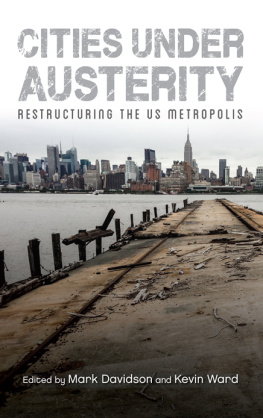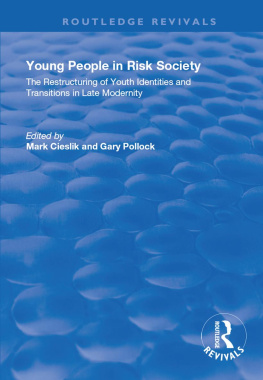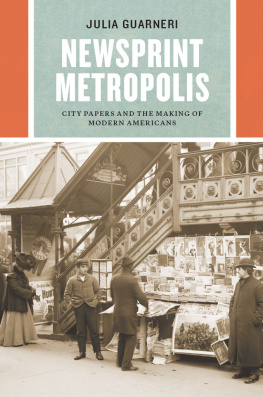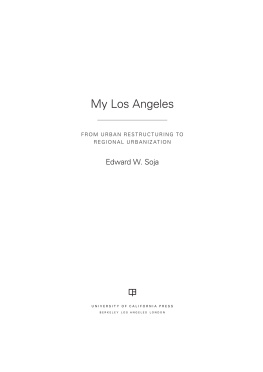CITIES UNDER
AUSTERITY
CITIES UNDER
AUSTERITY
Restructuring the US Metropolis
Edited by
Mark Davidson and Kevin Ward
Published by State University of New York Press, Albany
2018 State University of New York
All rights reserved
Printed in the United States of America
No part of this book may be used or reproduced in any manner whatsoever without written permission. No part of this book may be stored in a retrieval system or transmitted in any form or by any means including electronic, electrostatic, magnetic tape, mechanical, photocopying, recording, or otherwise without the prior permission in writing of the publisher.
For information, contact State University of New York Press, Albany, NY
www.sunypress.edu
Production, Ryan Morris
Marketing, Michael Campochiaro
Library of Congress Cataloging-in-Publication Data
Names: Davidson, Mark, 1979 editor. | Ward, Kevin, 1969 editor.
Title: Cities under austerity : restructuring the US metropolis / edited by Mark Davidson and Kevin Ward.
Description: Albany, NY : University of New York Press, [2017] | Includes bibliographical references and index.
Identifiers: LCCN 2017008960 (print) | LCCN 2017021933 (ebook) | ISBN 9781438468198 (ebook) | ISBN 9781438468174 (hardcover : alk. paper)
Subjects: LCSH: Municipal governmentUnited StatesHistory21st century. | Municipal budgetsUnited StatesHistory21st century. | Fiscal crisisUnited StatesHistory21st century.
Classification: LCC JS323 (ebook) | LCC JS323 .C53 2018 (print) | DDC 336/.01473dc23
LC record available at https://lccn.loc.gov/2017008960
10 9 8 7 6 5 4 3 2 1
Contents
Jamie Peck
Mark Davidson and Kevin Ward
L. Owen Kirkpatrick and Chalem Bolton
Sara Hinkley
C. S. Ponder
Aaron Niznik
Kathe Newman
Daniel J. Hammel and Xueying Chen
Mark Davidson and Kevin Ward
Mark Davidson and Kevin Ward
Illustrations
Figures
Tables
Acknowledgments
Editing an academic book can at times be a thankless task. Careers are littered with those who have done it once and vowed never to do it again. That the tasks were shared between the two of us made it easier. That the two of us get on outside as much as inside of work made it more than easier. It made it enjoyable, the shared labor necessary to edit a book a means of catching up with what each other was up to both professional and personally.
The impetus for this book came out of a series of conversations between the two of us, the first outcome of which was our contribution to a 2014 special issue of the Cambridge Journal of Regions, Economy and Society on Austerity and the city. In writing that article we became aware of how U.S. cities were restructuring themselves, although not under conditions of their own making. Austerity was reshaping all aspects of economic and social life and it was likely that the implications for urban futures were going to reveal themselves incrementally and unevenly over the next few decades. Given what we understood was at stakeintellectually and politicallywe were surprised that there had been relatively few attempts to pull together and compare the experiences of U.S. cities. It is on that which this book is focused. How are cities seeking to chart a way through the financial challenges posed of them both by the Great Recession and the public sector cuts imposed under austerity? That is, different cities, with different industrial histories, political alliances, population characteristics and redevelopment trajectories but facing a common twofold challenge.
Mark would like to thank the friends and colleagues who have shared their thoughts on our emerging urban political landscape. During the tumult of the Great Recession, many aspects of urban governance became difficult to understand. In a quest to grapple with this troubling and exhilarating situation, many a conversation with Bill Kutz about the fate of bankrupt cities impacted Marks thinking about where U.S. cities are now heading. Kurt Iveson has also been a constant source of inspiration, particularly when austerity made it into our joint reconsideration of critical urban scholarship. Rowland Atkinson, Lee Crookes, Chris Gibson, David Lukens, Deb Martin, Jim Murphy, and Elvin Wyly are also fellow travelers on the quest to understand these brutal times. Throughout the process of putting the collection together, Mark benefited immensely from the friendship and mentoring of Kevin Ward. Kevins legacy to urban geography grows by the month, and Mark is grateful to be a small part of it. Most of all, Mark would like to thank Michelle, Sadie, and Sam for putting up with his absences, late nights, and weekend trips to the office. His eagerness to return to their company hastened the completion of this text and many other tasks.
Kevin would like to thank the various audiences for his work over the last few years, subject as they were to his many and varied attempts to make urban governance and finance sound interesting! A number of colleagues/friends have played their part in helping him understand the changing ways in which city governments are present in financial markets, and he would like to acknowledge this intellectual debt: Josh Akers, Allan Cochrane, Mark Davidson, Jason Hackworth, Andy Jonas, Sarah Knuth, Bill Kutz, Jamie Peck, Andy Pike, Nik Theodore, Rachel Weber, and Andy Wood.
Kevin gives special thanks for the love and support received from Colette and Jack, for whom the content of this book is a long way from what he should be doing if he were a real geographer.
More formally, the editors would like to thank Michael Rinella at SUNY Press, and the anonymous reviewers whose constructive and supportive comments made this a better book.
Preface
Situating Austerity Urbanism
JAMIE PECK
Most crisis analysis comes directly after crisis, Mark Gottdiener (1986b, p. 277) wrote more than three decades ago; It catches a wave. Something broadly similar might be said about the working concept of austerity urbanism, which was developed in the aftermath of the Wall Street crash of 2008, tracking the global financial crisis and the onset of what proved to be a deep recession across the United States and across much of Europe, to be followed by a prolonged period of sluggish economic growth and restrictive government budgeting. This midlevel conceptual frame sought to capture, at least provisionally, some of the immediately evident urban dimensions of the crisis, which from its earliest stages seemed to be presenting as a conjuncturally significant and perhaps structural realignment, rather than a merely transitory or cyclical phenomenon. It should be recalled that the crash was initially read, quite widely in fact, not just as an indictment of the preceding period of financialized growth and neoliberal governance, but possibly as the death knell for this deeply embedded mode of market rule (see Hobsbawm, 2008; Rudd, 2009; Stiglitz, 2008; cf. Peck et al., 2010). However, even though the crisis evidently dealt a severe blow to the intellectual and political legitimacy of neoliberalism, this would prove to be a(nother) test case of the resilience and adaptability of this deeply entrenched mode of market-oriented and corporate-centric regulation. As the breakdown of the banking system was brazenly rescripted as another crisis of and for the social state, under the sign of austerity, so it would soon become clear that this did not mean a historic retreat of neoliberal hegemony but its reconstitution . After a brief period of open-ended legitimacy crisis and establishment-class disorientation, commitments to the antisocial credo of market fundamentalism were soon to be renewed and reinvigoratedin some cases in an even more doctrinaire fashion. Austerity became the watchword for another roiling phase of neoliberalization, based on the socially regressive redistribution of the long- and short-term costs of the crisis.










